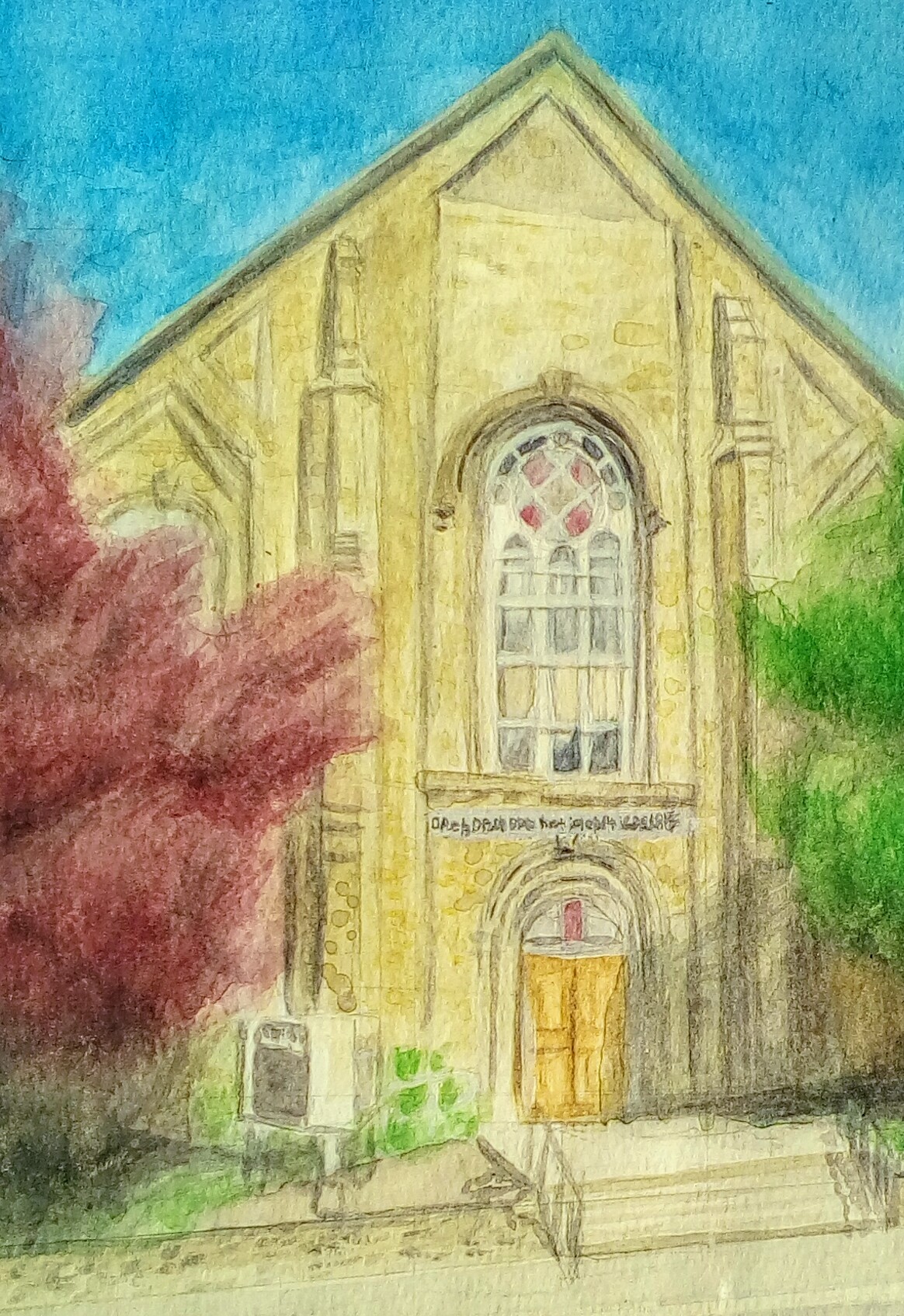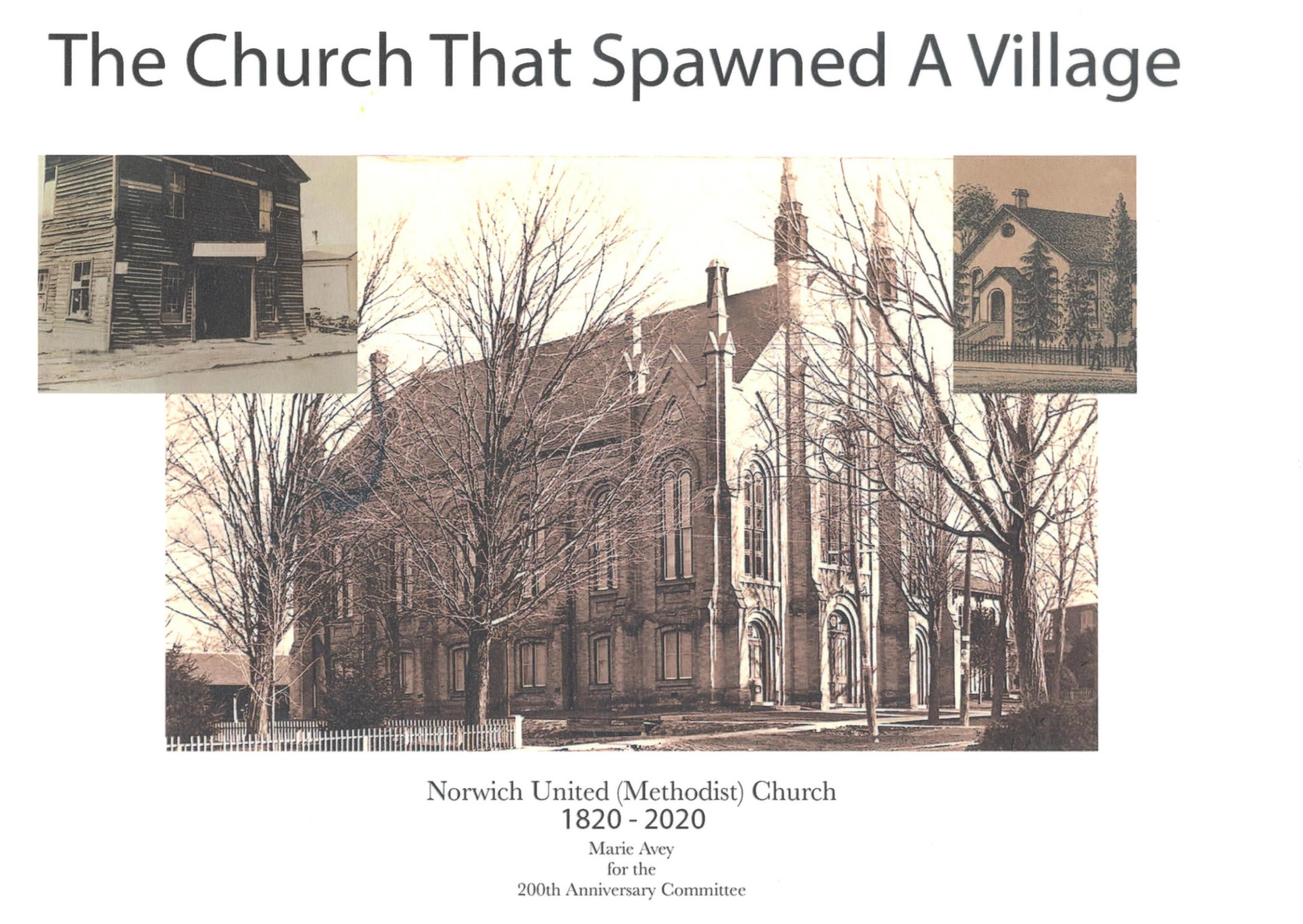

History is important: Norwich United Church has an incredibly rich history we are proud of.
1813 Methodist circuit riders including Rev. Wm. Ryerson hold meeting in Stover Home.
1820 Frame church constructed on present site on land donated by Stover.
1834 Rev. Thomas McMullen, first resident minister.
1839 Village of Norwichville (also known as Sodom) growing up around Methodist Church.
1840's Methodism in Norwichville rises rapidly thanks to house- to-house visiting and women's prayer meetings led by Mary Merrill, the "Barbara Heck" of Norwich Methodism.
1851 First parsonage built east of church, later moved to 108 Church St.
1861 Church building moved from site to become home of Couzen's Carriage Works.
1862 Building and dedication of the new brick church (#2) on original site (65' X 36').
1875 New brick parsonage built at cost of $2000.
1877 Episcopal Methodists build church on corner of Albert and Elgin Streets.
1884 Union of several branches of Methodism. Sale of Episcopal church to Baptists. Demolition of #2 building.
1885 Cornerstone laid for building #3 on site, Wm. Mellish of Brantford Architect, Wm. Merrill Builder.
1886 Dedication of "Handsome Church Ediface" (62' x 110') built at cost of $14 000, using two hundred thousand locally made bricks.
1892 Ontario Premier Oliver Mowat comes to the church to give a lecture on "The Evidences of Christianity" and Pauline Johnson "The Indian Poetess" gives recital here.
1900 Union talks with the Presbyterian Church progressing favourably Anglicans and Baptists Observers.
1913 Severe windstorm causing one church spire to fall through the roof into the Sanctuary, other spires removed.
1925 Sanctuary renovated, chair loft brought forward.
1925 Church unions with 31 Presbyterians, 1 Congregationalist, 31 Charter Members (some Quakers) and 451 Methodists forming Norwich United Church.
1929 Lowering of basement floor, redecorating of sanctuary.
1930's Many missionary rallies, one featuring Dr. Charles Endicott.
1940's Many prayer and work meetings related to WWI.
1953 Repairs to brickwork and redecorating of basement and auditorium cost - $14 000.80
1959 Building of Christian education wing, cost of $24 000.
1962 Combination of WA, "the Marthas," and WMS, "the Marys," into the UCW
1967 Landscaping and refurbishing of church as a centennial project.
1971 Church life film made by Al Munro.
1984 Designation of church and manse under the Ontario Heritage Act.
1986 100th anniversary of 3rd building with many events including the opening of cornerstone to remove 1885 time capsule.
1988 Renovations to manse.
1991 Renovations to church to provide offices and accessibility.
We must correct the misunderstanding that the original Methodist church in Norwich was a log cabin. There are pictures of it in its later years as a commercial building.
It was constructed of sawn lumber with upper and lower windows giving the impression of being 2 storeys but Janet (Hilliker) and I have decided that it was built on the same plan as the Hay Bay chapel in Eastern Ontario, the earliest in Upper Canada. It was constructed with a 3-sided gallery set in view of the raised pulpit. This was a traditional Wesleyan style. I have visited Wesley's New Room in Bristol where Wesley himself preached from such a pulpit to such a gallery.
At first, here in Norwich, they did not have pews: they used planks on blocks. They did use the building for about 40 years and even by 1820 many of the settlers' homes and barns were constructed of sawn lumber. (The Lossing house at the museum is from that early period.) Our early Norwich settlers were not poor people. They brought hired labourers and money with them and had things up and running pretty quickly when you consider the density of the forest when they first arrived.
Marie Avey
The Logo
The new Norwich United Church Logo features deep symbolism and reflects the NUC's mission statement of serving others through fellowship. The deep blue of the logo represents a sense of trust, faith, and reflection while the golden yellow of the rising sun represents illumination and compassion. The rolling fields demonstrate deep roots within the farming community as well as evoking imagery of the bible. The cross shows faith in Christ, and the rising sun represents new beginnings and is reflective of the serene views that are the beautiful sunrises over Norwich Township.
LOGO DESIGNED AND GRACIOUSLY GIFTED TO US BY HOLLY DUFTON